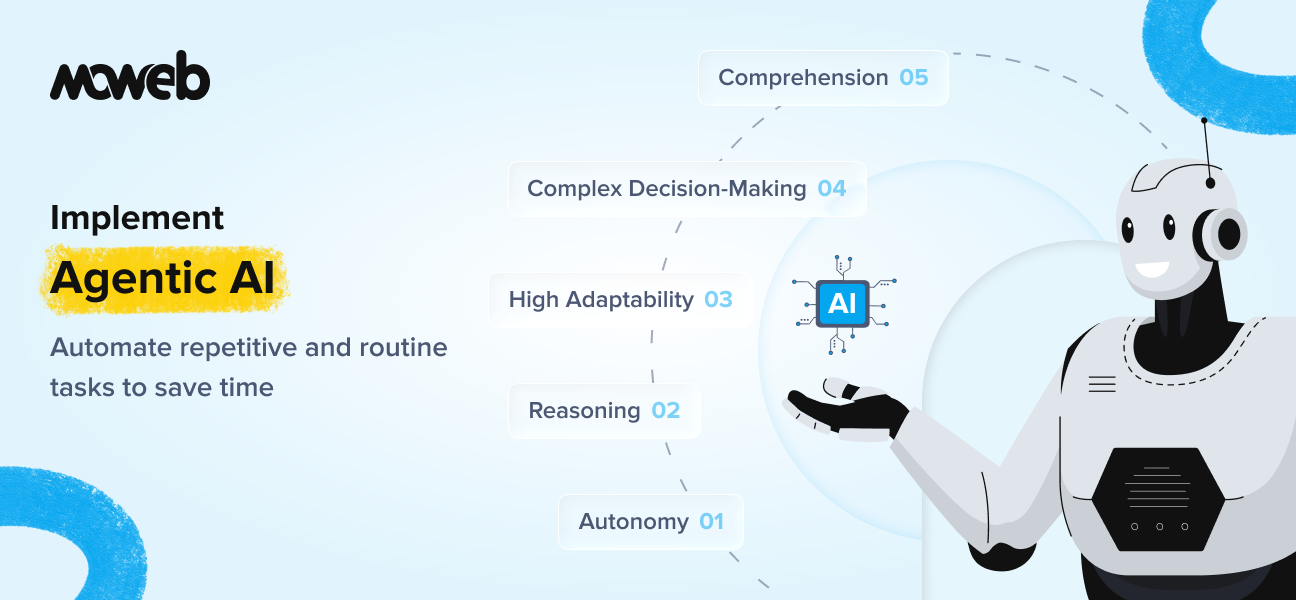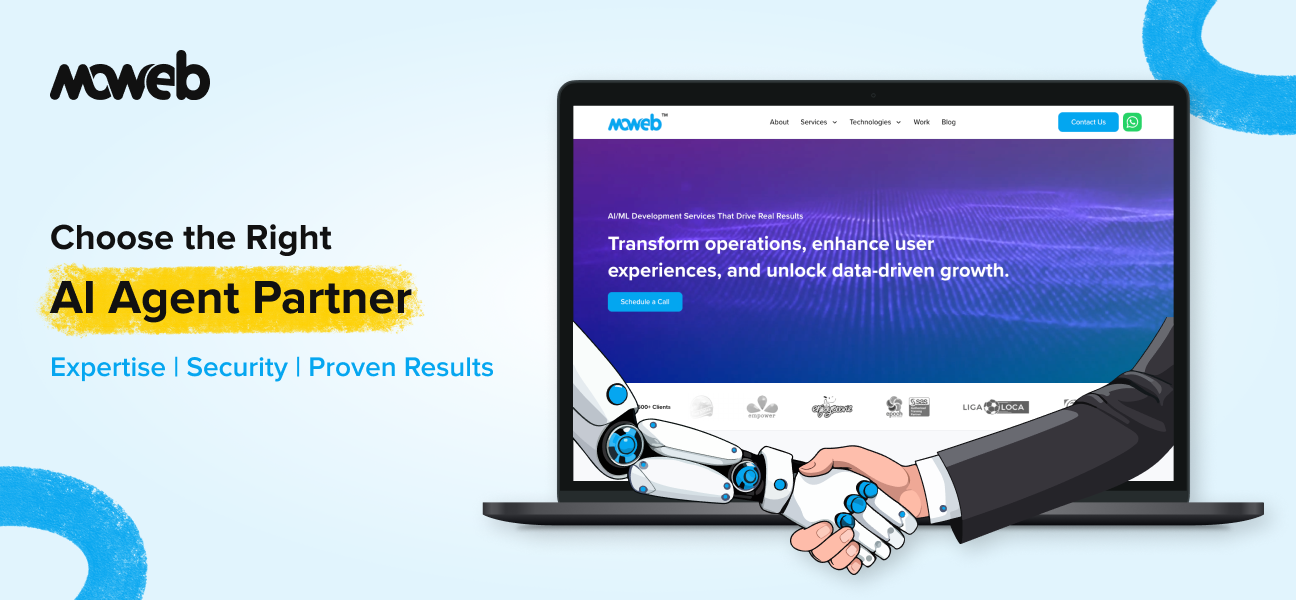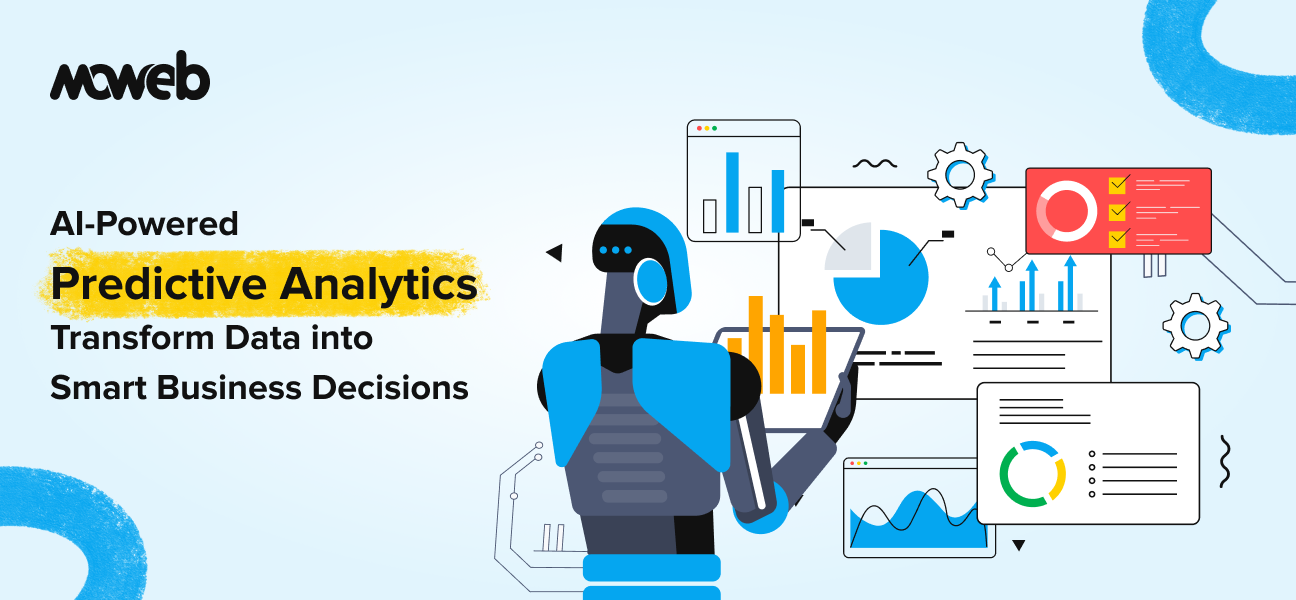
Feeding a growing world isn’t just about having more land or more hands. With the global population heading toward 10 billion, agriculture is under serious pressure. Farmers are being asked to produce more food using less water, less land, and fewer workers. What adds to the challenge is they need to do all this while facing unpredictable weather and changing climate patterns.
That’s where AI is stepping in, not as some futuristic extra, but as a real, working part of modern day agriculture. Artificial intelligence is helping farmers do things that once felt out of reach. It can predict how much a field will yield, detect crop diseases early, fine-tune irrigation, and even automate planting and harvesting. To understand better about how farmers are experiencing better yields and profits, let’s read ahead about AI in agriculture.
The Modern Agricultural Challenge
Farmers today are up against a long list of moving targets. The total global food demand is expected to increase by 35% to 56% by 2050, but on the other hand, usable farmland is shrinking. Weather has become unpredictable, and floods, droughts, and storms are no longer rare – they’re part of the growing season now.
This isn’t a world where experience alone is enough. Gut instinct matters, but it’s no longer enough to drive the big decisions. Modern farming calls for accuracy, foresight, and smart resource use. Farmers need tools that help them see clearly and act quickly, and that’s exactly where Artificial Intelligence fits in.
Introducing AI as a Game Changer in Agriculture
Coming to real-life examples, we see it in multiple ways. Whether it’s spotting early signs of crop disease, adjusting irrigation based on real-time soil data, or planning harvests around upcoming weather, AI brings the kind of insight that used to be impossible a few years back.
The impact is already visible. Fields are using less water. Pesticide use is dropping, and simultaneously yields are going up. And the best part is that these changes are paving the way for sustainable farming practices that can grow with the world’s needs.
AI in farming isn’t about fancy machines. At its heart, it’s about helping farmers make sense of everything happening on their land, which means the soil, the weather, the crop stages, and more. There’s so much data in agriculture today, and AI helps turn it into something useful.
What makes AI and machine learning in agriculture different from regular software is that it keeps learning. It doesn’t just follow a fixed rulebook. It looks at patterns in the data and gets better over time. That means the advice it gives keeps getting sharper and more relevant.
Related AI Topic: How AI Is Transforming Supply Chain Management?
Real-World Use Cases of AI in Agriculture
Precision Farming & Smart Monitoring
AI helps farmers treat each part of their land based on its exact needs. Instead of spraying an entire field, they can target specific patches with just the right amount of fertilizer or water. This level of detail comes from satellite imagery, drone scans, and on-ground sensors. It leads to better yields, lower input costs, and less waste overall.
Crop & Disease Detection Using Computer Vision
By training AI models on thousands of crop images, farmers can now catch early signs of disease, pest infestation, or nutrient stress. These issues often start small and are hard to spot with the naked eye. Drones with built-in cameras can scan huge areas in minutes, helping farmers act quickly before the problem spreads too far.
Predictive Analytics for Yield Optimization
AI uses a mix of weather history, soil data, and past harvest trends to estimate what a field is likely to produce. These predictions help with planning — from deciding how much seed to buy, to managing labor and storage. It also helps buyers and suppliers align their operations with what the farm will realistically deliver.
Autonomous Farming & Robotics
AI-driven machines are already taking over repetitive tasks like planting, spraying, and even harvesting. These machines follow GPS routes and adapt to field conditions in real time. In areas where skilled labor is limited or costly, automation is becoming a practical necessity, not just a futuristic option.
Automated Weed Identification and Removal
Weeding used to mean walking rows for hours. Now, AI lets machines tell the difference between a crop and a weed with sharp accuracy. Some systems spray only the weed, reducing chemical use. Others physically remove them. It saves time, reduces herbicide reliance, and supports more eco-friendly farming.
Automating Irrigation Systems for Optimal Water Use
AI-powered irrigation doesn’t just run on timers. It pulls data from moisture sensors, weather forecasts, and crop growth stages to decide when to irrigate — and how much. This approach prevents overwatering, which can lead to rot, and underwatering, which stunts growth. The result is healthier crops and smarter water use.
Soil Analysis and Nutrient Management
AI tools can analyse soil samples to identify nutrient gaps, pH imbalance, and mineral deficiencies. Combined with crop data and season timing, they recommend exactly what nutrients to apply and when. This cuts down on over-fertilization, lowers costs, and keeps the soil in better condition for future crops.
Supply Chain Optimisation and Forecasting
AI helps smooth out the chaos after harvest. It forecasts demand, suggests pricing strategies, and plans transport routes. This ensures the produce moves efficiently from farm to market. Fewer delays mean less spoilage and better margins for farmers and distributors alike.
Smart Irrigation & Water Management
This is a step beyond basic irrigation. AI systems factor in land slope, soil type, crop variety, and water flow beneath the surface. They create a complete water strategy for the farm, helping conserve resources without sacrificing yield. It’s a big win for regions facing drought or tight water regulations.
The Role of AI in Modern Agriculture
You’ll see this in many forms. Some systems use machine learning to spot risks before they happen. Others often use cameras and drones to scan fields and pick up signs of crop stress. Sensors in the ground track moisture and temperature and send that info straight to the farmer’s phone. All of these advancements are shifting farming from reacting to problems to staying ahead of them.


Curious What AI Could Do for Your Farm?
Moweb a AI software Development Company has helped farms increase yield, cut water use, and make better calls — all without changing how teams work.
How AI Is Integrated into Agriculture Software
AI in agriculture isn’t a separate tool sitting on the side. It’s built into the software platforms farmers already use which is quietly turning raw data into clear, helpful insights. The first step is collecting that data from the field. Moisture sensors buried in the soil track water levels and nutrients. Drones and satellites capture high-res images of the land. All of this flows into the system, where AI begins its work.
The AI algorithms look for patterns, these include comparing new data with past seasons, crop cycles, and regional benchmarks. From there, they make real-time recommendations or predictions that farmers can act on. Whether it’s spotting early signs of drought or adjusting a planting schedule, the insights are specific and practical.
These results are delivered through dashboards that are easy to access, whether on a phone, tablet, or desktop. Farmers can monitor crop health, plan irrigation, and track projected yields all in one place. In some setups, the system can even trigger automatic responses, like changing watering levels or flagging pest alerts for quick action.
This kind of integration is what makes AI feel less like a tech leap and more like a natural upgrade. Even traditional farms can start using it without overhauling everything, and run smarter operations.
Challenges & Future of AI in Agriculture
Artificial intelligence does hold a lot of promise, but AI adoption in agriculture is far from happening overnight. Firstly, the cost of drones, sensors, and smart software can be high, especially for small and mid-sized farms. Moreover, many rural areas also lack stable internet, which makes real-time data use harder than it should be.
Then there are deeper concerns that go beyond tech. Who owns the data collected from the farm? Is it the farmer, or the platform provider? And as automation spreads, what happens to jobs in regions where employment is already uncertain?
Notably, sustainability is part of the conversation too. It’s not just about efficiency. Why? Because it is about building systems that respect biodiversity, soil health, and long-term land use. If AI pushes for short-term gains without that lens, the cost could be soaring high.
Lastly, there’s a real knowledge gap. Farmers are open to new tools, but they need support to use them well. Training, fair pricing, and ongoing guidance are key. The future of AI in agriculture looks strong , but only if it stays grounded in human needs and not just technical potential.
Future Trends of AI in Agriculture
The next chapter in farming won’t be about using the best tools, it would be about systems that work together. Sensors, machines, and platforms will start speaking the same language. Farms will be able to respond automatically when weather shifts, pests appear, or soil conditions change.
AI won’t just help with the present or the day-to-day goals. Instead, it would help farmers think five years ahead. By analyzing decades of climate and yield patterns, AI can guide crop planning, risk management, and long-term investments in a way that feels less like guessing and more like strategy.
Autonomous machines will also keep getting smarter. Tractors will handle more than driving. As climate change continues to push the boundaries, farmers will rely on AI tools to choose crops and planting windows that are more likely to succeed.
The Future of Farming Isn’t a Theory — It’s a Timeline
Stay ahead of the curve with an AI and ML Development Company that’s already building tomorrow’s agri-tech tools.
How Moweb Can Help Implement AI in Agriculture
Integration of AI with Existing Farm Systems
We don’t expect you to start from scratch. Our team works with the systems you already use—like tractors, sensors, spreadsheets, anything that’s part of your daily operations. As an experienced agriculture software development company, we focus on stitching AI into that existing flow, so adoption feels natural and disruption stays low.
End-to-End Digital Transformation
From the first seed in the ground to the final harvest report, we help you digitize every step. Sensors in the field, real-time updates in the cloud, decisions driven by data. And all of this working as one connected system.
Real-Time Data Analytics & Dashboard
You can’t manage what you can’t see, which is why we make it visible. Our dashboards give you a live view of what’s happening across your farm, tailored to your crops, your region, your goals. From weather risks to soil trends, everything’s in one place and actually makes sense.
Scalable and Cost-Efficient Solutions
We know every farm doesn’t have enterprise-level budgets, and that’s okay. Our solutions grow with you, starting small if needed and expanding as you scale. The architecture is modular, which means you invest only in what you need, when you need it.
Support & Training for Farmers and Teams
New tech shouldn’t feel intimidating. We train your team, walk you through the tools, and stay available long after the system goes live. Because the best AI system in the world is useless if the people using it don’t feel confident.
Proven Experience in AgriTech Projects
Our team of experts AI in agriculture has worked with farms of all sizes. Starting from helping detect disease early, optimizing irrigation, and improving crop yield with smarter and connected data. The numbers speak for themselves, but what matters more is how these changes make life easier for the people running the farm.
Use of Cutting-Edge Technologies
AI and agriculture are both two fast moving domains, where the landscape and technology keeps evolving in AI in agriculture. We make sure you are not left behind. Be it edge computing in the field or cloud-based ML models for crop forecasts, we build with what’s reliable now and ready for what’s next.
Case Study: Smart Irrigation for a Mid-Sized Fruit Farm
A mid-sized fruit farm was running into the same problem year after year. Yields were unpredictable. Water was being overused. And pest outbreaks were often caught too late to stop the damage.
Moweb came in with an AI-powered solution that didn’t require them to start over. We connected soil moisture sensors, satellite imagery, and local weather data into one system. Everything was tied into a mobile dashboard their team could use in the field.
After just one season, the changes were clear. Water use dropped by 37%. Yields went up by 21%.
And their team started getting real-time alerts for disease risks before problems got out of hand.
The best part? They didn’t need to change their entire setup. The system plugged into what they already had and made it work better.
Conclusion
It’s easy to overlook how much farming has evolved and how fast it’s happened. Not long ago, checking moisture meant digging a hole and guessing. Now it’s a live feed on your phone.
When we talk about AI and its varied applications, the tools work and the impact is real. What’s truly exciting is that it doesn’t matter if you’re running a family farm or managing thousands of acres, AI is here to give you clearer data, sharper decisions, and the ability to plan ahead with confidence.
You don’t have to change everything on day one. Just start with a use case that matters to you. Find a partner who understands the field. And take that first step toward smarter farming.
FAQs
Can small farms benefit from AI technology?
Yes, and many already do. You don’t need a large budget or acres of land to get started. Even something as simple as a mobile app that tracks soil moisture or sends pest alerts can make a real difference. It’s about choosing tools that fit your day-to-day reality, while not trying to overhaul everything at once.
How does AI improve crop yield in agriculture?
In essence, AI helps farmers get more out of what they already have. Starting from aspects like soil condition, weather forecasts, and crop performance to guide actionable decisions. That means watering at the right time, applying treatments only when needed, and avoiding the kind of guesswork that often leads to lower yields.
What are the best AI tools for precision farming?
The best tool depends on what challenge you’re facing. Some are designed for soil analysis, others for spraying or satellite monitoring. If you’re just starting out, pick one that solves a clear pain point. For example – managing irrigation or spotting disease early, you can easily build from here as your needs grow and evolve.
How do drones help in AI-based agriculture?
Drones give farmers a bird’s-eye view of the field, since they can capture detailed images that AI then analyzes to detect stress, disease, or signs of poor irrigation. What used to take days of walking can now be done in under an hour and with far more accuracy.
How can AI help in sustainable farming practices?
By helping farmers use just what they need, and no more. AI recommends when and where to apply water, fertilizer, or treatments based on real data. Over time, this leads to lower costs, healthier soil, and less impact on the surrounding environment.
What is the future of AI in farming?
Farming is becoming more and more connected every year, all across the globe. It is not uncommon to see evolving tech like autonomous machines to predictive software. AI is helping farmers respond faster and plan smarter. The goal? It is never to replace farmers, but to give them better tools to deal with whatever comes next, whether it’s a dry season or a shifting market.
Found this post insightful? Don’t forget to share it with your network!





